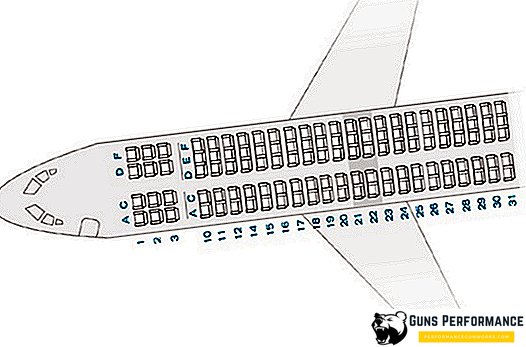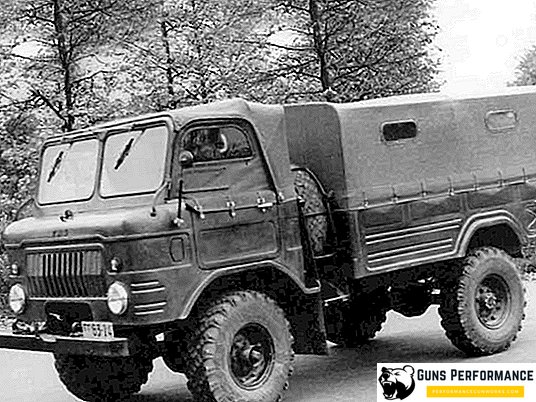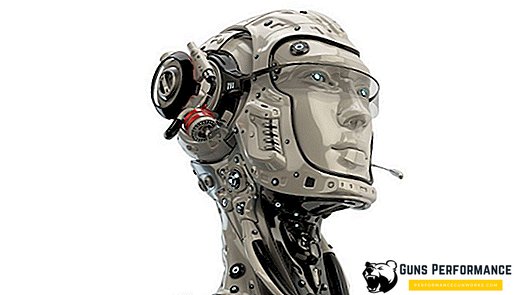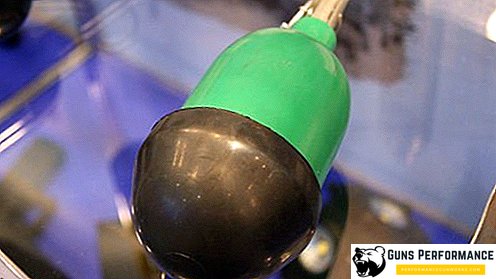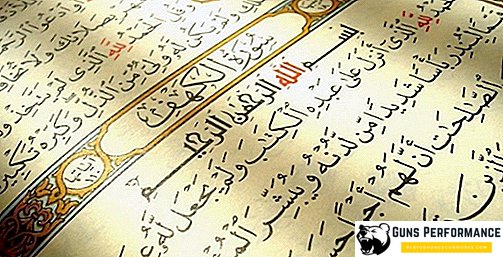The head of Moldova is the president, who represents the interests of the state in the international arena and is the guarantor of independence, as well as the rights and freedoms of citizens of the country. In Moldova, the head of state is elected for a four-year term, and his inauguration takes place after the inauguration, during which the president takes the oath. In the event of war, his term of office is automatically extended until the situation in the republic stabilizes. Currently, Igor Dodon, who was elected in 2016, is in office.
The history of the people before the formation of the Moldavian principality
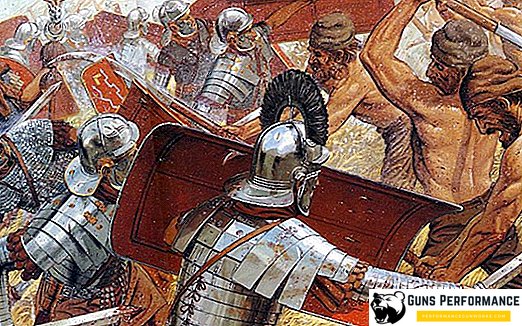
The first information about the peoples (the Getae and the Dacians) who settled in the territory of present-day Moldavia dates back to the 4th-3rd centuries BC. The tribes of the Geth were often mentioned in ancient Greek sources, they conducted active trade with the merchants of the Greek Black Sea colonies. The further course of the history of these territories had the following development:
- In the 1st century BC. Getic king of Burebista managed to rally all kindred tribes under his power and establish a powerful state, before which even Ancient Rome trembled. The main task of creating a strong aggressive tribal alliance was the opposition to Rome, whose armies conquered Macedonia and Greece, coming close to the lands of the Geth. After the assassination of Burebista during the insurrection, the state split into 4 parts;
- The Burebista case was continued by the Dacian king Detsebal, who seized the entire province of Mesius in 86 AD, defeating the army of the Roman governor;
- After several years of fighting, with varying success for the Romans and Dacians, Emperor Traian completely subdued Dacia in 106, turning it into a Roman province. The territory of modern Moldavia did not fall within the Roman province, although the romanization of lands played a great role in the further development of the country. During this period, the foundations of the culture and development of languages were laid, including Moldovan;
- In the 2nd-4th centuries, Dacians, Gethes, Scythians, Goths and Slavs lived on the lands of Moldova. They constantly fought with Rome, but after the weakening of the empire, they were able not only to develop freely, but also to make periodic raids on the Roman provinces;
- From the 6th century, Slavic tribes began to settle in the Balkan Peninsula.
In the X-XII centuries, the Prut-Dniester interfluve was densely settled by Slavic tribes. Formally, all these tribes obeyed the influence of the Kiev principality. Sometimes Kiev princes collected tribute, but the local tribes of the Slavs could give them a rebuff. The influence of Kievan Rus was seriously weakened as a result of the invasion of the Polovsk and Pecheneg hordes between the rivers. From the middle of the XIII century, Moldavia and Wallachia fell under the influence of the Mongol-Tatars, who besieged all tribute.
The influence of the Horde weakened in the 70s of the XIV century, Wallachia began to turn into a feudal principality. The valley of the river Moldova by this time came under the influence of Hungary.
The formation of the Moldavian principality

The Moldovan tribal aristocracy was unhappy with its dependency on Hungary. In the second half of the 14th century, Maramuresh voivode Bogdan, who had served before the Hungarian king, led armed resistance against Hungary. In 1365, Bogdan I became the master of the new independent principality, which received the name Moldavian. By his decree he made the city of Siret the capital of the state. The rulers of Moldova tried to maintain cultural and economic ties with some states:
- Wallachia (modern Romania);
- Transylvania;
- Galician Rus.
Partnerships with Russia played a special role, since the majority of Moldovans were Orthodox.
The further history of the development of the Moldavian principality is closely connected with the confrontation of Poland and Hungary. The latter, in 1377-1378, sought to completely oust Poland from the region in order to seize Romania and the Galician principalities. Moldovan rulers perfectly understood that they were between two fires, so they decided in 1387 to go under the rule of Poland. This period lasted for about a century, and the Moldavian princes had autonomy in all the internal affairs of their state. Moldova continued its cooperation with Wallachia, in 1392 the southern part of the Wallachian lands became part of the Moldavian principality. The country was able to get access to the Black Sea.
By the beginning of the 15th century, the economy of the Moldavian principality became quite stable:
- Peasants engaged in cattle breeding and farming;
- The fertile lands brought enormous grain harvests;
- Trade with Constantinople and other major trading cities of the Mediterranean was successfully developed.
The trade with the western European lands was adjusted. The rich lands of Moldova and Romania attracted the attention of the Ottoman Empire.
The difficult period of Ottoman domination and the division of Moldova into two parts

In 1453, Constantinople fell under the onslaught of the Ottoman Empire. After that, European states were under the gun of the Ottomans. Poland and Hungary, being strong states, had the opportunity to conduct an open and successful defensive struggle against the Turks. Moldavia and Wallachia could not always count on their strength, so they:
- Openly opposed the Ottoman Empire separately;
- United with each other against a common enemy;
- Asked for help from Hungary or Poland;
- They paid tribute to the Ottomans.
In 1456, Moldova paid the first tribute to the Ottoman Empire, and in 1487, Stephen the Great signed a peace treaty with the Turks on the payment of annual tribute. Under Stephen, the state was practically independent, since the ruler was able to achieve maximum centralization of power.
Despite all the reforms of the Moldovan rulers, they did not manage to retain power in their hands. Feudal civil strife began to torment the state. Taking advantage of this, the Turks increased their pressure and at the beginning of the 16th century achieved an increase in the size of the annual tribute.
The political and social composition of the Moldavian principality in the XVI century:
- At the head of Moldova stood the ruler appointed by the sultan. He made the rulers only aristocratic loyal to him;
- The next most important class was the boyars, divided into "great" and "small";
- The communist peasants were divided into dependent parties, which were subjected to enslavement, and rezheshey, using shared ownership of land.
By the 17th century, the Rezeshi began to turn into serf peasants according to the "Laying Down" by Gregory Vasily Lupu in 1646, which led to a fall in the country's economic level. Boyars and Moldavian officials, paying tribute to the Ottoman Empire, increased taxes to the peasants, trying not only to compensate for their expenses, but also to make the most of themselves.
The plight of the peasantry resulted in a series of uprisings. There was a "gaiduchestvo" - the movement of the armed peasantry against the boyars and the Turks. The origin of the haidus is not exactly traceable. According to one version, these are free shepherds from the mountainous province of Haida, who organized military campaigns, not wanting to become serfs. All thieves hunted in the territories of Moldova, began to be called haiduks. They rarely robbed the peasants, so they enjoyed popular love.
In 1711, a secret treaty was concluded between Moldova and Russia against the Ottoman Empire. The period of the Russian-Turkish wars of the XVIII-XIX centuries began. In the XVIII century, the troops of the Russian Empire three times liberated Moldova from the Ottoman Turks. Thousands of Moldovan volunteers fought in the ranks of the Russian army. Despite Russia's military successes, it returned Moldavia to the Ottoman Empire three times. In 1812, the Russian-Turkish war ended with the signing of the Bucharest peace treaty. According to him, the eastern part of Moldova (Bessarabia) was ceded to the Russian Empire. The rest of the state remained under Ottoman rule.
Development of a divided Moldavia until 1917

The Ottoman part of Moldova was oppressed not only by the Turks, but also by local aristocrats. In the territories of the state peasant uprisings constantly flared up. The nobility was extremely dissatisfied with the dependent position on Turkey. In 1821, a rebellion broke out, its leader was the former Russian officer Tudor Vladimirescu. The rebellion was suppressed, but the local boyars were able to choose the rulers at will.
Bessarabia went to Russia and was the poorest and most sparsely populated part of Moldova. The Russian Empire was able to ensure security in the region, the country began to develop rapidly:
- Over 80 years, the population has increased 8 times;
- New churches and schools were being built, and old ones were Russified;
- In 1873, Bessarabia became the province of Russia.
The transition of a part of the country under the authority of the Russian Empire did not change the position of the peasantry. The agrarian reform of 1861-1875 created new problems without solving old ones. Massive peasant unrest began, for the suppression of which government forces were used.
The development of capitalist relations allowed Bessarabia to reach a higher level of economic development, and trade relations with other countries were improved. The beginning of World War I turned the country into an arena for fierce battles. Local peasants were starving, as all their property was taken by military units passing by. The 1917 revolution was greeted happily by local workers and peasants hoping to get the factories and land in their hands:
- In September 1917, the Council of Workers 'and Soldiers' Deputies received power in Bessarabia;
- In October 1917, the nationalists in Chisinau created their governing body, Sfatul Tszyri;
- In 1918, Romania sent its troops to Bessarabia and annexed it to itself;
- In 1924, the entire left-bank part of Moldova was transformed into the Moldavian Autonomous Soviet Socialist Republic, which became part of Soviet Ukraine;
- In 1940, the Soviet Union began demanding the return of Bessarabia from Romania. Under pressure from fascist Germany, the Romanian government was forced to cede its part of the USSR.
On August 2, 1940, a law was adopted on the formation of the allied Moldavian SSR. The divided country is united. Romania abandoned its claims on the territory, being sure that Germany would help her to get everything back, and also to seize a part of Ukraine.
In 1941, Moldova was occupied by Germany and Romania. In 1944, the country was liberated by Soviet troops. Post-war development of the republic as part of the Soviet Union:
- The consequences of the Second World War were liquidated;
- Huge plants and factories were built;
- There was a massive relocation of Russians and Ukrainians to Moldova.
The government had communists who ruled the country before the beginning of perestroika.
Formation of an independent Moldova

In the Soviet Union began restructuring. Moldova, like the other Union republics, took the path of democratization and the desire for independence. Created by the Popular Front, in 1989 it became a serious political force. There have been major changes in the country:
- Latin was restored;
- Moldovan language received the status of the state;
- The government advocated strengthening the country's sovereignty.
Russians and Ukrainians living in Moldova openly opposed the separation of the country from the USSR.
In 1994, Moldova received a new constitution, it was fixed that the country has a presidential-parliamentary form of government. The first president of the country, Mircea Snegur, was appointed to this post in 1990 and was elected in 1991 at official elections. He tried to bring the republic to the European level of development, but he failed to:
- Production was partially destroyed;
- Emigration has increased;
- Scientific institutes and institutions were closed;
- Moldovan goods, "leaving" earlier in other republics of the USSR, turned out to be not needed by the West.
Inflation and unemployment grew at a tremendous pace. Allowing imports of foreign goods finally undermined local production.
The next important stage in the development of the republic was the coming to power of the Communists, headed by Voronin. In 2006, relations between Moldova and Russia were ruined. The republic refused to buy gas at new prices, after which Russia imposed a ban on the supply of local wine. In 2009, the elections (according to official information of the communist authorities) were won by the communists, which caused a surge in popular protests. Voronin announced that this was an attempted coup d'état, and blamed Romania for everything. Nevertheless, the Constitutional Court allowed to recount the votes in the elections, after which the Communist Party went to the opposition, gaining 49.48% of the votes.
Status and duties of the President of Moldova

The head of Moldova has a number of responsibilities. At the same time, presidential orders do not have the force of legislative acts, since all important documents are adopted by parliament. According to the country's constitution, its leader must:
- Convene parliament for special or unscheduled sessions;
- Implement legislative initiative;
- Sign all legislative acts adopted by Parliament, with the consent of them. Otherwise, the law is sent to the parliament for review with the president’s marks. If the law returns to the head of the republic without changes, he will be obliged to sign it;
- Nominate candidates for the post of prime minister. In this case, candidates must be approved by Parliament;
- To appoint and dismiss members of the Government as advised by the Prime Minister. At the same time, the head of Moldova may once reject the proposal of the prime minister;
- In some cases specifically provided for in the constitution, to dissolve parliament;
- To negotiate and participate in them, to conclude various international political and trade treaties, without fail submitting them to parliament for ratification;
- To appoint and recall diplomatic representatives of your country;
- Personally accept various diplomas from diplomats from other states;
- To declare a partial or total mobilization. This is also done with the consent of the Parliament of the Republic of Moldova;
- To impose martial law in the country, and then immediately report it to Parliament;
- To award those who have distinguished themselves with awards and confer various honorary titles;
- Assign military high ranks;
- Declare amnesties and pardon;
- Solve issues related to the granting of citizenship and political asylum;
- Require a consultative referendum, the decision of which has no legal force.
The President of Moldova is the Supreme Commander of the armed forces of the country. This honorable duty is confirmed in the constitution, but in fact, it can be perceived only symbolically. The real control of the armed forces belong to the Minister of Defense.
How to become president of Moldova and features of the election procedure

Moldovan President is elected by direct popular vote. Requirements for applicants:
- To be a citizen of the country with the right to vote;
- Reach 40 years of age;
- To live in the country for at least 10 years;
- To own the state language.
The candidate who won at least 50% plus 1 vote is considered the winner. If none of the candidates gains the necessary number of votes, hold a second round of elections. Only 2 leaders from the first round participate in it.
The election results must be recognized by the Constitutional Court. Then the elected candidate is obliged to take the oath within 45 days after the election. After that, the head of state is officially considered inaugurated. The term of presidency in Moldova is 4 years. It is automatically extended if the state enters a war or a state-scale disaster occurs. The constitution does not provide for the right to hold a presidential position for more than two consecutive terms.
List of presidents of Moldova and their residence

Presidents in Moldova appeared since 1990. The list of politicians holding this position:
- 1990-1997 - Mircea Snegur. His reign fell on the most difficult period of the formation of the republic. He wanted to be re-elected for a second consecutive term in 1996, but lost to his rival Luchinsky;
- 1997-2001 - Peter Luchinsky. He continued the privatization of state property. Constantly fought for the sphere of influence with the parliament;
- 2001-2009 - Vladimir Voronin. A communist promised that during his rule Moldova would enter into a single alliance with Russia and Belarus. In 2009, he was forced to resign, although he initially won the presidential election, as the riots began;
- До 2012 года вместо президента были только временно исполняющие его обязанности;
- 2012-2016 годы - Николай Тимофти. Бывший судья и член высшего Совета магистратуры.
В настоящее время президент Молдавии Игорь Додон, вступивший в должность в 2016 году.
Резиденцией главы республики является президентский дворец в Кишинёве, построенный в 1980-х годах, а его торжественное открытие прошло в 1987 году. Именно в этом здании находится приёмная президента, там же работает его горячая линия. В 2009 году дворец серьёзно пострадал во время народных беспорядков.
На современном этапе в республике нестабильная политическая и экономическая ситуация. Хотя президент Игорь Додон уверен, что сможет повысить уровень благосостояния граждан. Несмотря на заявления президента, Молдавия по-прежнему остаётся одной из беднейших республик бывшего СССР. Многие граждане страны вынуждены зарабатывать за её пределами.


